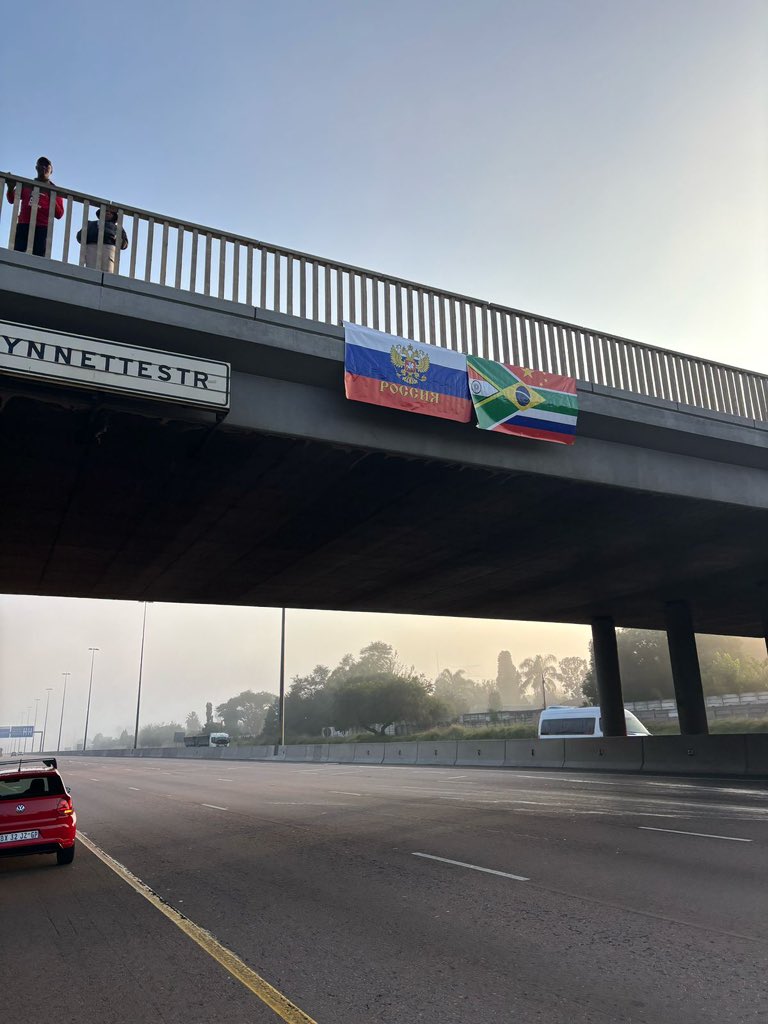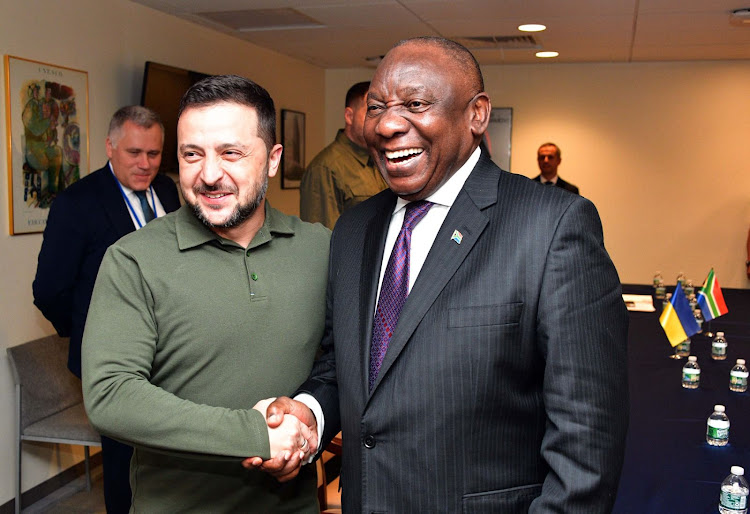Pretoria, South Africa
As Ukrainian President Volodymyr Zelenskyy touches down in South Africa for a high-profile diplomatic visit, a surprising sight is drawing attention across the capital: Russian flags waving from balconies, fences, and street poles in central Pretoria.
It’s not a coincidence. It’s a message.

A City Draped in Defiance
In a striking act of public protest and political expression, some South Africans are using the Russian flag to signal opposition to Zelenskyy’s visit — and, more broadly, to voice criticism of South Africa’s growing engagement in the Ukraine-Russia conflict.
What started as a few scattered banners has turned into a visible wave of solidarity with Moscow, challenging the official tone of the state visit and raising questions about how South Africans really feel about their country’s foreign policy direction.
Symbolism Meets Strategy
These displays are about more than just flags — they’re about geopolitical alignment, ideological identity, and the global divide over the war in Ukraine. While the South African government maintains a stance of non-alignment, many on the ground seem to be choosing a side — and they’re not shy about it.
The Political Undercurrent
Zelenskyy’s visit is focused on expanding ties with South Africa in trade, agriculture, education, and calls for peace efforts amid Russia’s continued invasion of Ukraine. But the optics in Pretoria suggest his presence is not universally welcomed.
“This isn’t about supporting war,” said one protester draped in the Russian tricolor. “It’s about resisting Western narratives and standing with what we believe is right.”
A Divided Reception
While President Cyril Ramaphosa prepares to roll out the red carpet for Zelenskyy, the streets tell a more complex story — one of a nation split on its stance, caught between diplomacy and public dissent.
As the Ukrainian leader holds talks behind closed doors, Pretoria is speaking loudly in public — in red, white, and blue.
